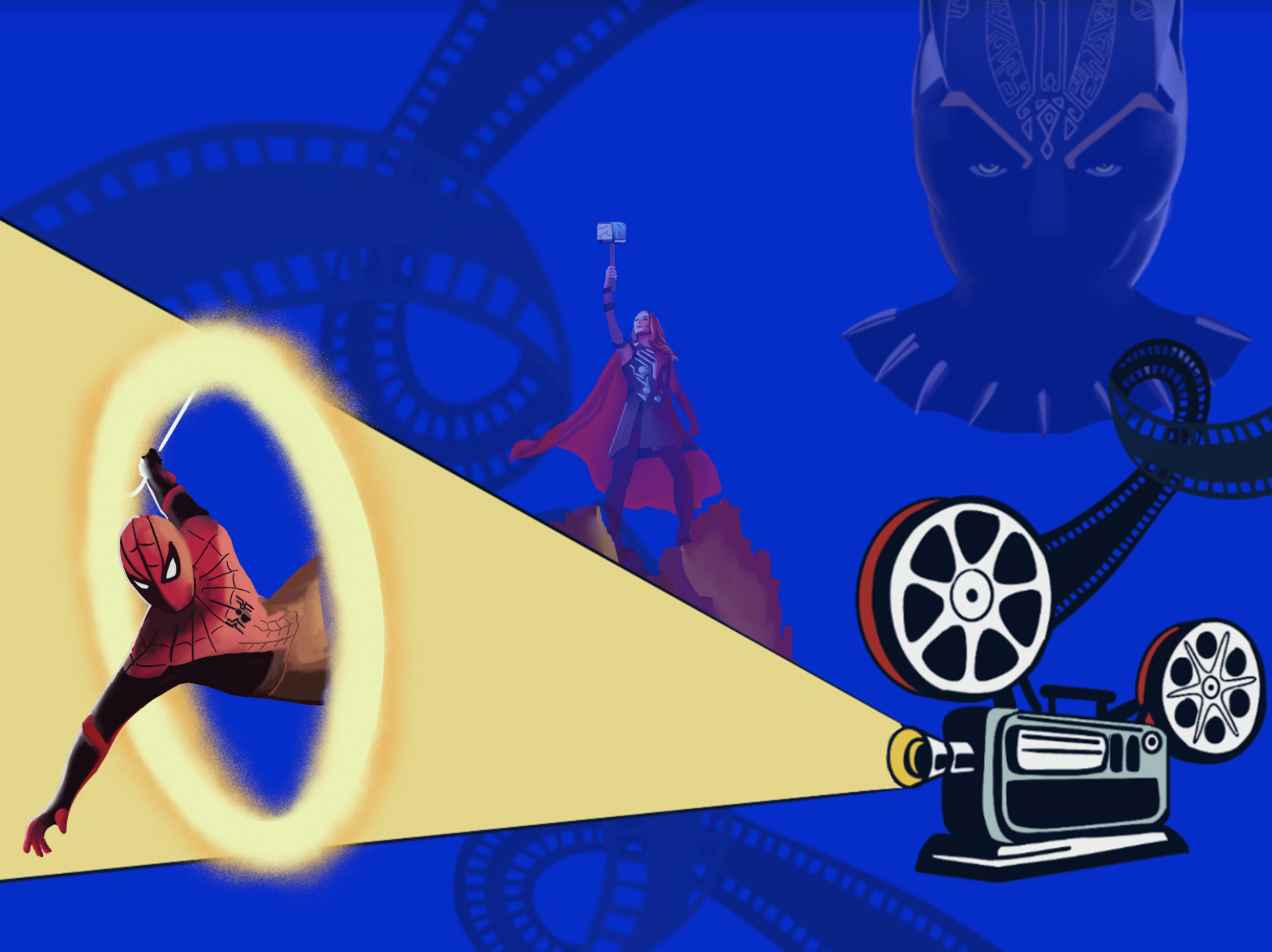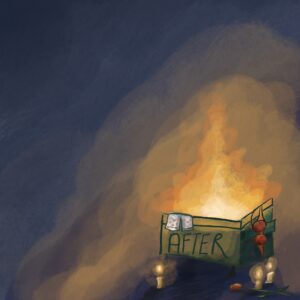This review contains spoilers for Phase Four of the MCU
The year was 2019. After 11 years, 21 films, and several (retroactively canon) TV shows, each building upon a massive web of deeply interconnected narratives and storylines, the Infinity Saga of the Marvel Cinematic Universe (MCU) finally entered its endgame. Although Spider-Man: Far From Home (2019) acts as Phase Three’s official conclusion, at the time, Avengers: Endgame (2019) really did feel like the end of an era.
Despite its many flaws, it is widely understood that Endgame was a massive cultural phenomenon when it was released. In addition to breaking countless records, the film was one of the most ambitious crossover events in modern entertainment. Endgame brought millions of fans together from across the globe to celebrate the apparent final chapter of what was, and in many ways still is, one of the biggest media franchises of our generation.
So, after such a seemingly perfect “final chapter,” the big question for many fans remained: What comes next? How could they hope to continue going forward after the end? For two years these questions would go unanswered.
Enter Phase Four, the official start of the Multiverse Saga of the MCU.
Unlike its predecessors, Phase Four was no mere continuation of previous projects and storylines. Rather, Phase Four set out to be a new beginning for the MCU, a fresh start following the culminating conflicts of the Infinity Saga. While this distinction meant new projects would offer the MCU far greater scope to explore new narratives, characters, and expand its universe, it also meant this slate of projects had to spend considerable effort tying up the loose ends left by Endgame. Moreover, these films would have to balance this lofty goal with setting up future projects in a way that shifted the scope of the MCU to the multiverse—a task that would necessitate future projects innovate upon existing conventions for the MCU’s narratives and worldbuilding.
These two goals left Phase Four simultaneously occupying the roles of both prologue and epilogue. While the new roster of films and projects transitioned away from beloved characters—like Tony Stark’s Iron Man (Robert Downey Jr.) and Steve Rogers’ Captain America (Chris Evans)—the films had to make way for the many new heroes and narrative developments future phases of the MCU were hoping to explore.
The efforts to balance its transitional role within the MCU manifested as a heavy sense of grief and change that pervaded the thematic components of each project. In many ways, Phase Four— arguably more than any of the other phases of the MCU—also had to balance these goals with integrating itself seamlessly into the societal narrative of a “post-pandemic” world.
The thematic aspects of the Phase Four projects mirrored the sociocultural state of our reality at the time of their release—a world scarred by the impact of a global pandemic. Whether intentional or not, Phase Four had to grapple with prevailing questions that surrounded not only recovery but also how to navigate a world so drastically and rapidly changed by tragedy—in this case, the infamous snap. These challenges provided a unique opportunity for the MCU to reinvent its boundaries, but in execution, Phase Four fails to meet audience expectations, much less meaningfully tackle these challenges.
Phase Four has widely been considered a disappointment by both new and longtime fans—but it didn’t mean they weren’t watching. With several Phase Four movies being ranked among the top 10 most successful MCU films at the box office, there is, at least presently, no lack of audience interest in what the MCU has to offer.
Despite record-breaking interest, however, many fans continue to express a sense of disillusionment with all that this phase has offered. While many aspects of Phase Four are admittedly praiseworthy, there were simply too many pitfalls that left fans utterly disappointed with the overall experience.
Much of this disappointment stemmed from the failure to consistently execute its themes across its many slated projects and successfully carry the MCU into its newest saga. Phase Four—the first to include TV shows as fully integrated parts of the MCU—had to balance its overarching themes across 15 total projects rather than just the seven film releases. While an impressive feat on paper, this plan was too ambitious to execute, especially in just one year following major release schedule changes.
With projects ranging from the long-awaited Black Widow (2021) to the fourth wall-breaking She-Hulk: Attorney at Law, Phase Four bit off far too much narratively, ultimately fumbling what could have been excellent storytelling. Aside from condensing what should have been years of development for many new characters into a handful of projects, the entire phase felt incredibly disjointed. While many of these projects did connect in some way or other—albeit sometimes through fan invention—there was simply not enough care put into making sure that all these stories fit cohesively into a larger narrative. Many projects felt only tangentially related, with little thematic consistency between one another. The resulting product was incredibly disappointing, especially for a phase that had the potential to allow the MCU to further flourish with the complex themes it planned to tackle.
Two projects guiltiest of these narrative shortcomings were Eternals (2021) and Thor: Love and Thunder (2022). Each had the capacity to be phenomenal, but ultimately squandered their stories for mediocre storytelling—or in the case of Love and Thunder, utterly underwhelming use of the characters they featured.
Eternals, with its incredibly diverse cast of interesting new characters, could have been a captivating story of lost purpose, disillusionment, and new beginnings. Instead, the film failed to fully engage its audience and did very little to actually integrate this new cast into the grander scheme of the multiverse. This film felt painfully separate from the rest of the MCU. What connection it did have felt like an afterthought rather than a legitimate justification for the existence of this project and its characters. Moreover, Eternals failed to fully embody the concepts of change and grief that pervaded other Phase Four projects. Due to the sheer size of its cast and the massive amount of worldbuilding that had to be done, Eternals accomplished very little with all it set out to do—a problem that seems to plague the entirety of Phase Four.
While projects like Eternals disappointed because they fell short, films like Love and Thunder simply failed. It strayed so far in its attempts at comedy that it not only felt tonally divorced from the remainder of Phase Four, but it also wholly disregarded years of development for one of the MCU’s most beloved protagonists. This film’s complete character assassination of Thor (Chris Hemsworth) is not only indicative of a lack of care but also reveals worrying levels of dissonance between these projects and the stories they hoped to carry on.
Beyond its narrative inconsistencies and tonal failings, the MCU attempted to leverage Phase Four to integrate new directorial styles and genres into its projects—with mixed success.
Projects like Doctor Strange in the Multiverse of Madness (2022), which promised a new stylistic direction and multiversal possibilities for the MCU, severely under-delivered. The film teased fans with the promise of horror and noir with the appointment of Sam Raimi as director and pitted two of the most powerful and intriguing MCU characters against each other. Though there were moments of excellent supernatural gore, and Wanda Maximoff (Elizabeth Olsen) made for an intense and terrifying villain, the film suffered from a severely rushed and simplified narrative. Wanda’s reduction into a two-dimensional antagonist—without a clear explanation of the Darkhold’s corrupting effects—left fans who had come to know the character via WandaVision wanting. Multiverse of Madness’ mediocrity serves as a clear warning: Reducing a former protagonist/current anti-hero into a full-fledged villain to appeal to a broader audience cannot be done without extreme care.
Despite marketing distinct new “flavors” of projects to audiences, poor production and management also led to potentially great projects feeling laughably mediocre at best. Though Love and Thunder squandered its narrative potential, many of its problems also derive from Phase Four’s rushed release schedule. The movie’s complete lack of balance between moments of comedy and gravity indicates a script that desperately needed more time to simmer. Moreover, audiences have pointed out the movie’s at-times comical CGI, from oversaturated backgrounds to the infamous floating head of an Asgardian child. The lack of quality not only comes from last-minute changes to filming locations and production timelines due to COVID-19 but also from industry-specific demands. Marvel’s overloaded launch schedule places immense pressure on VFX artists, who wrestle with extremely tight turnaround times. The sheer number of movies in Phase Four resulted in copious reshoots and late-stage changes demanded by directors with little understanding of VFX, leading to absurd overtime hours and stress for artists, many of whom are not unionized.
Despite these creative disappointments, projects like Black Panther: Wakanda Forever (2022), Spider-Man: No Way Home (2021), and WandaVision represent some of the best of what the MCU had to offer. At its best, Phase Four proved Marvel projects can still astonish audiences when given the right time, vision, and execution. These projects told incredibly compelling stories while embracing themes of mourning and change with open arms. These projects placed great care into the stories they aimed to tell, resulting in some of the most cohesive and moving projects of Phase Four. They hit on the phase’s thematic motifs beautifully, giving room for audiences to grieve, cope, and grow along with the lead characters.
Most notably, Wakanda Forever dove headfirst into the grief of its characters and treated their pain with immense care. The movie took its central thesis of grief and ran, allowing the film to flourish into a completely sincere and masterfully curated project (which was also visually, aurally, and technically brilliant).
Another success and one of Phase Four’s first forays into the multiverse, No Way Home came out as the surprising favorite in expanding the MCU, hitting the necessary summer blockbuster notes, and, as the seventh-highest-grossing film of all time, proved that theatrical releases could rebound from COVID-19. No Way Home’s three-way crossover bringing in Tobey Maguire and Andrew Garfield’s Spidermen from past Sony projects made for an unmatched post-outbreak theater atmosphere. The film even achieved the remarkable feat of retroactively improving on characters and iterations of Spider-Man borrowed from other franchises by virtue of their cameo appearances.
However, these excellent Phase Four projects further emphasize the glaring shortcomings of the phase as a whole. Each project simply needed more time to breathe in their conception and production as well as time between each project for fans to become fully acquainted with all the new characters and storylines being introduced. Moreover, if the MCU had put greater emphasis on ensuring narrative and thematic consistency within Phase Four, these projects could have better complemented one another and been drastically improved.
With Phase Five officially beginning with the release of Ant-Man and the Wasp: Quantumania on Feb. 17, the MCU needs to return to the quality that audiences have come to expect from Marvel studios. Not only does the new phase need a clear narrative structure that ties its projects together, but his phase must also set a captivating, tangible, and sufficiently terrifying future threat to ground the series. In other words, Kang the Conqueror (Jonathan Majors) must be compelling, and always looming. The MCU’s version of Kang must have a strong and complex motivation to keep audiences engaged, as well as excellent power scaling to establish the threat they pose.
Ultimately, Phase Four was more of an utter disappointment than an outright failure; it would be disingenuous to pretend that its components were entirely without merit. As the phase continuously botched its characters and themes to produce many arguably unfinished projects, one cannot help but yearn for what Phase Four could have been. If the MCU has learned its lesson, Phase Five will hopefully propel this franchise toward greater heights by building on the shaky foundation of its predecessor. Otherwise, fans may not continue to be as forgiving of the multiverse’s blunders.





